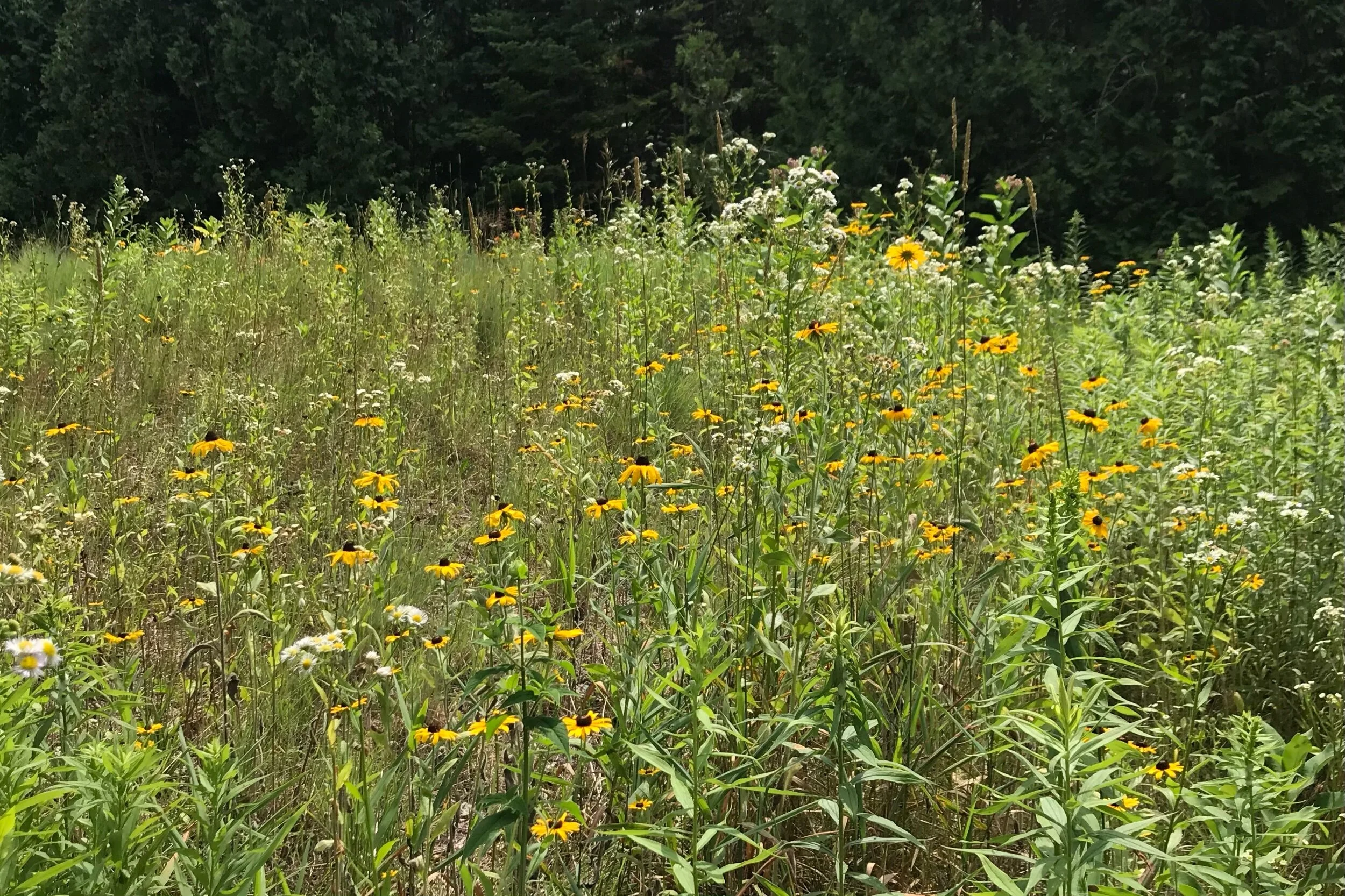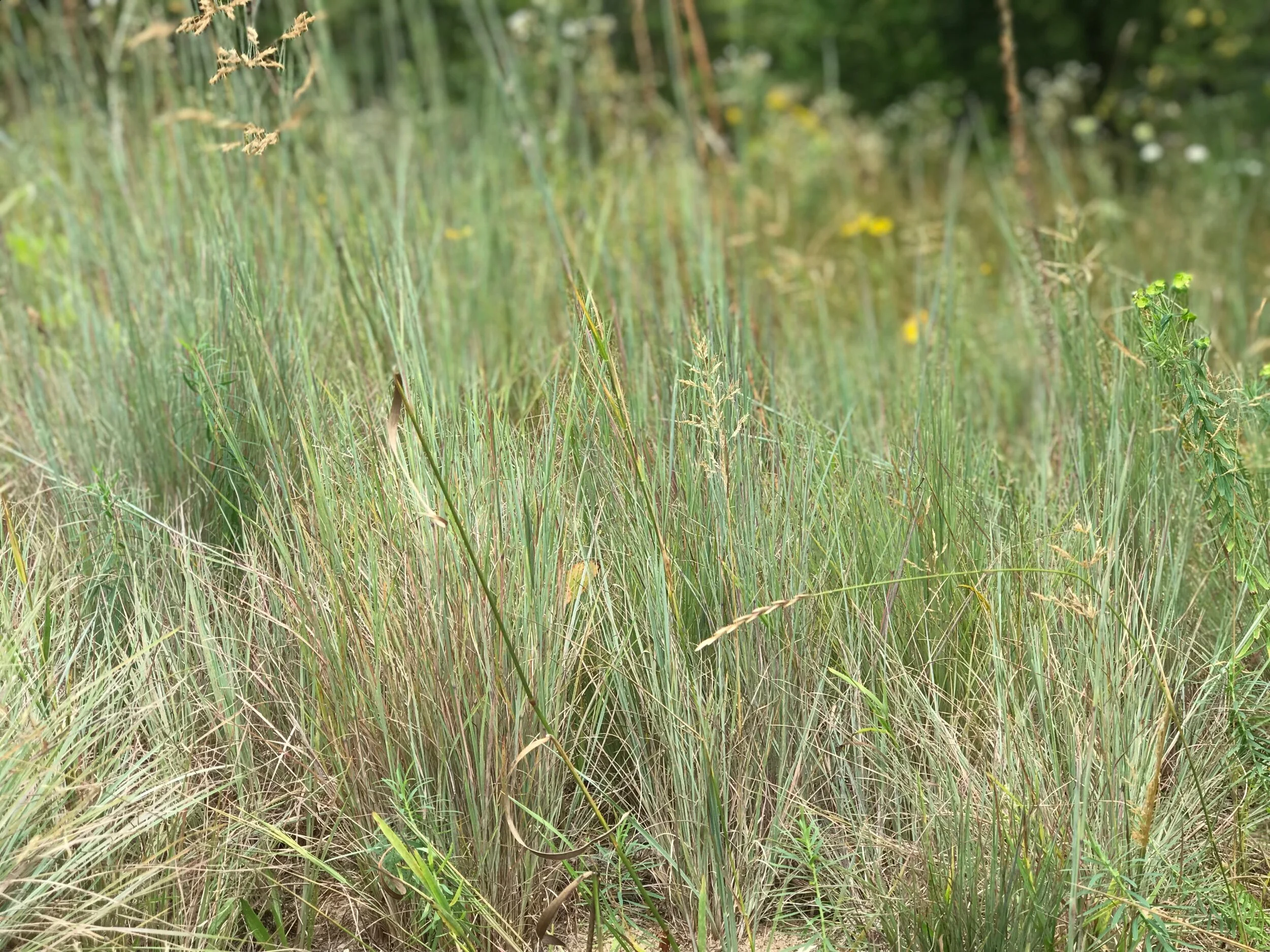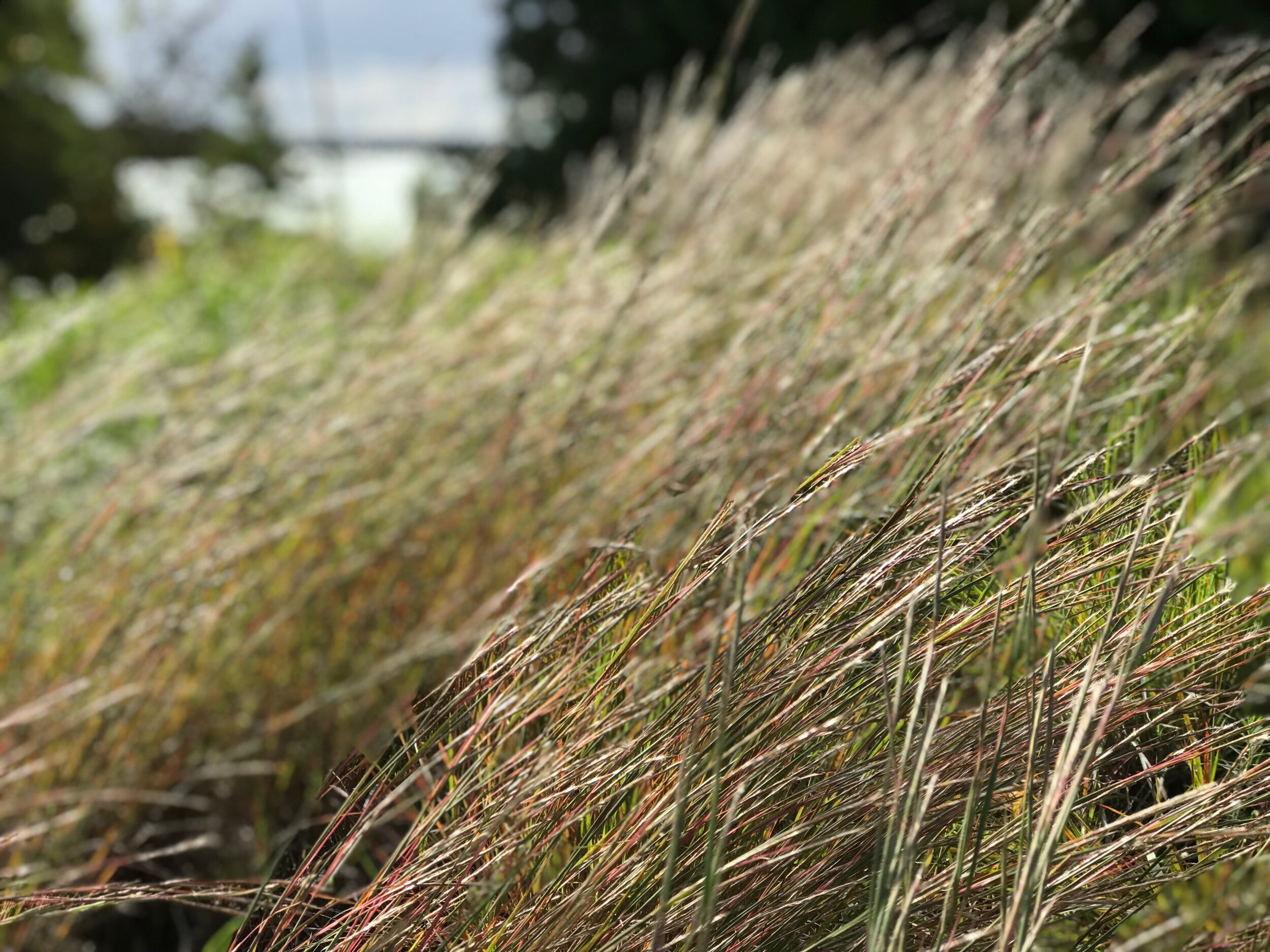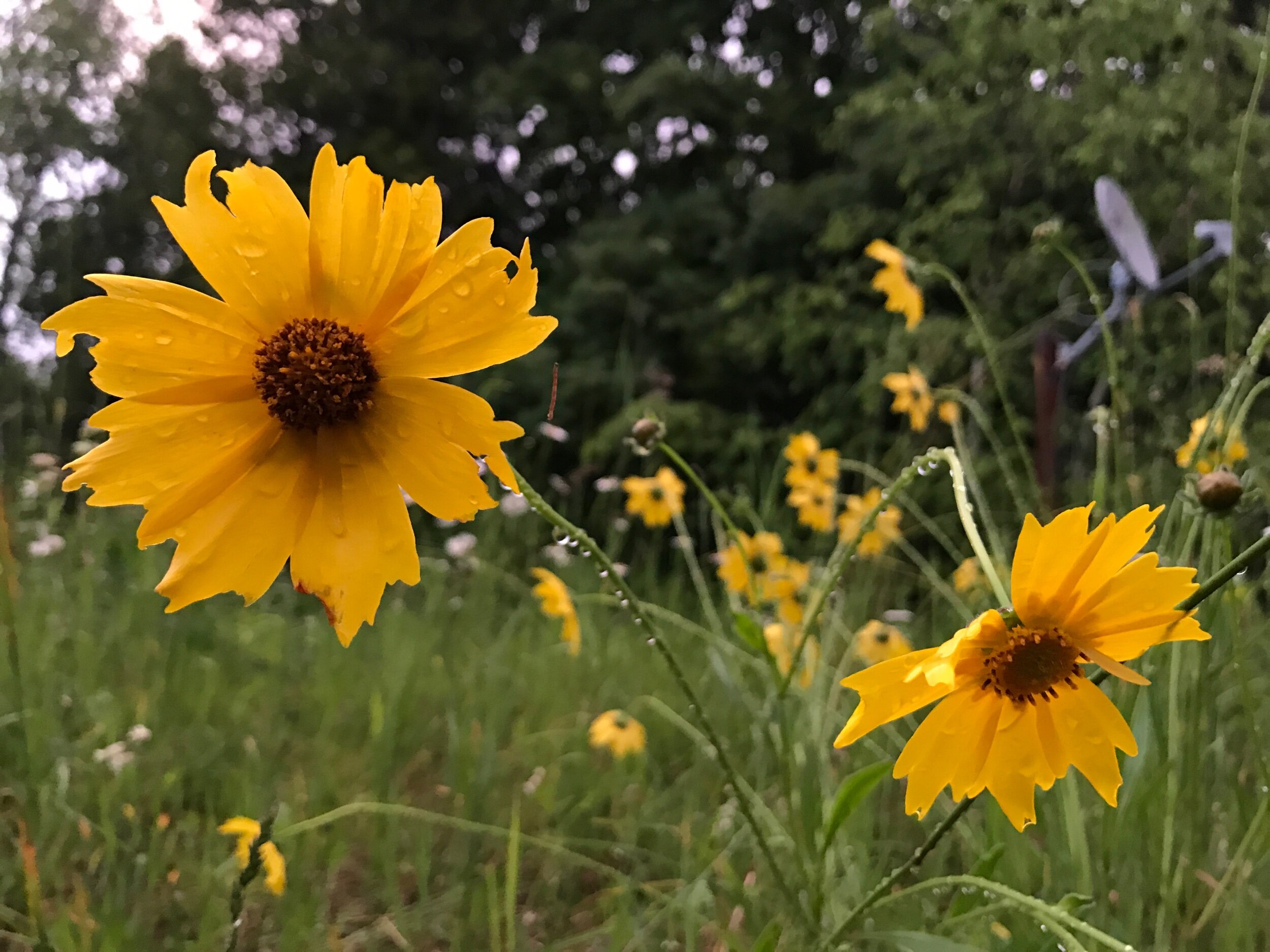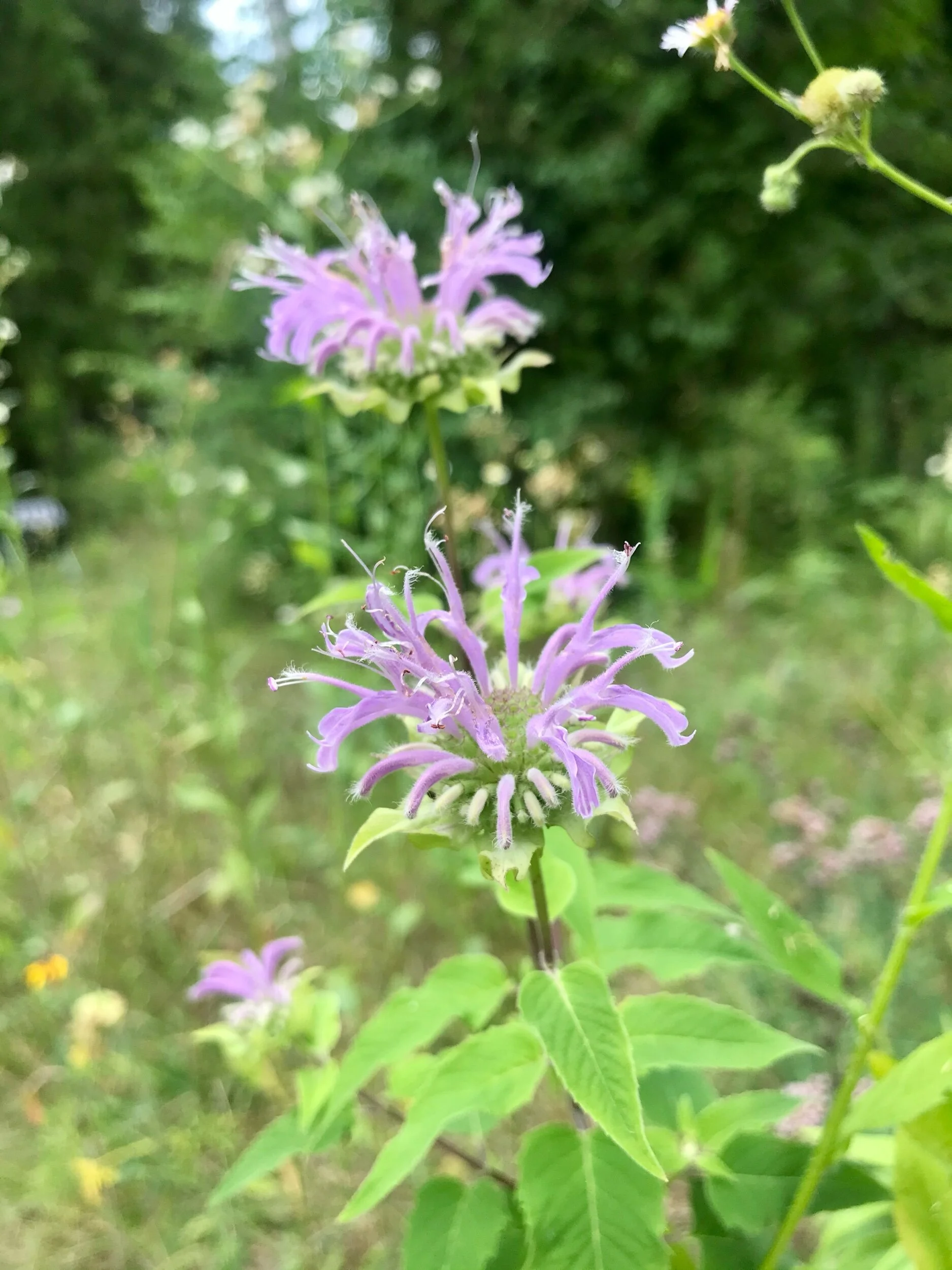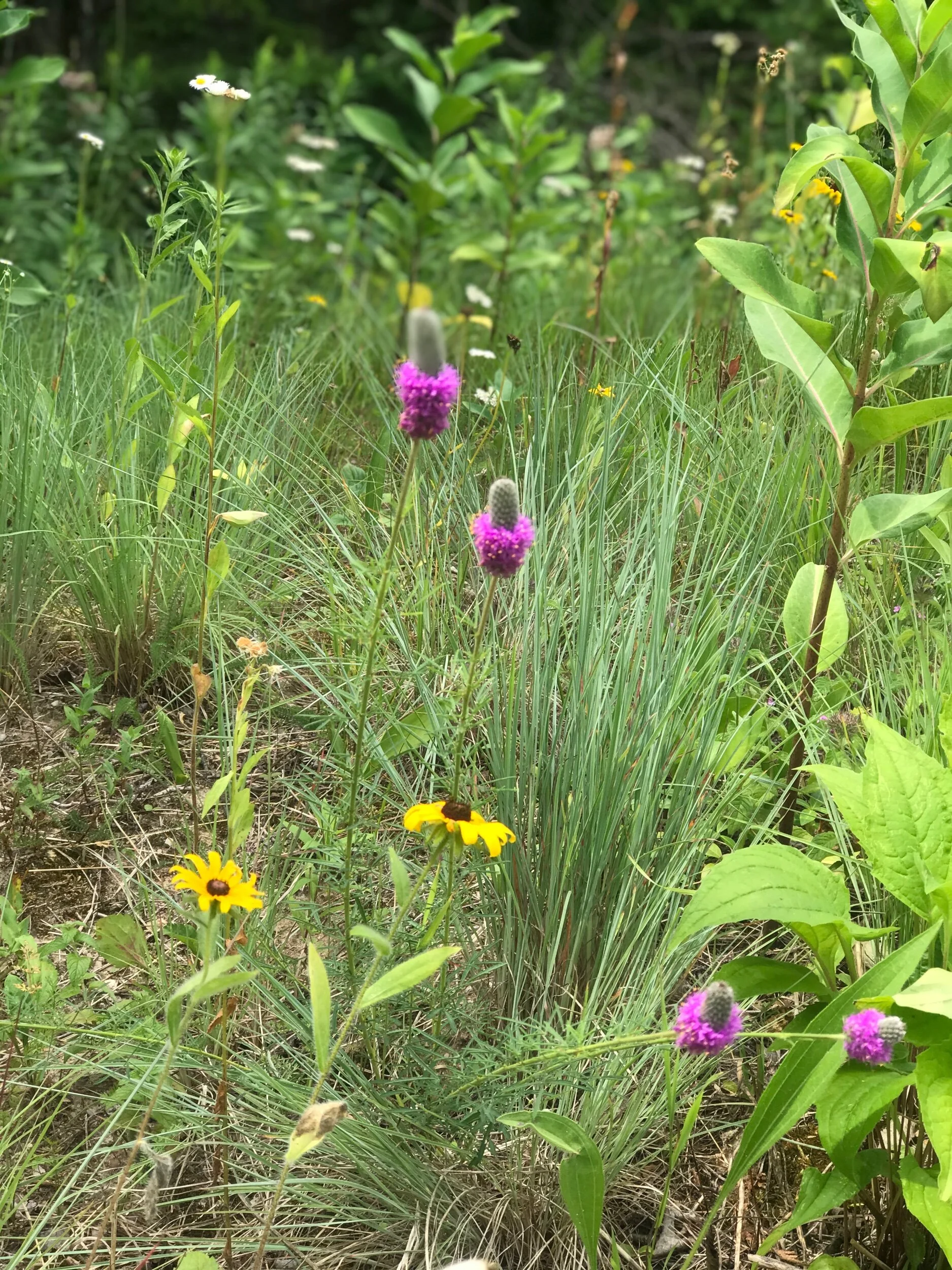Years of poor management meant that the septic system had to be replaced. With this I had the opportunity to establish a meadow on the sandy soil mound that would be left bare. With the right selection of seed, wildflowers and native grasses can actually benefit a septic system because they absorb the nutrients discharged into septic beds better than turf or evergreen ground over. It is also beneficial to the environment by providing food sources for bees, birds, and other wildlife who depend on flowers for life.
The first year after the septic bed was re-built, I spread a mix of native flowers and grasses that contained a rye grass nurse crop to help compete against other seed that tried to establish.
The grasses established really well immediately. Little Bluestem provides a colourful blanket early in the season and it takes on gorgeous colours in the fall, often a first indicator of the seasonal change. I didn’t see a lot of floral growth right away, but with the establishment of a few flowers, over time the self seeding gradually increased the overall flowers.
The process that followed the next couple of years was maintenance - I monitored the new growth in the first and second year and removed anything that would potentially cause harm. This type of management is key to the success of the septic bed by ensuring nothing woody or invasive invades the meadow.
After 7 years of light intervention and monitoring this system is largely self sustaining. I’ve seen a boom year over year of flower reproducing and with it an ecosystem that followed.

